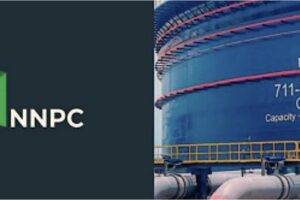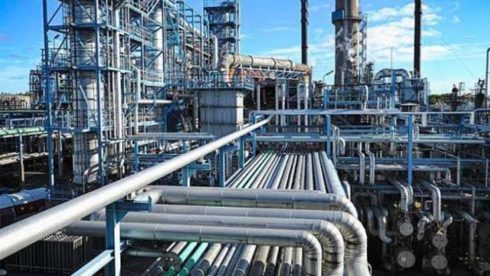The Group Chief Executive Officer of the Nigerian National Petroleum Company Ltd (NNPCL), Mele Kyari, has announced that the Port Harcourt Refinery will commence operations by August this year. This development is part of a broader initiative by the national oil company to revitalize Nigeria’s refining capacity and reduce dependency on imported petroleum products. Kyari made this revelation during an interactive session with the joint committees of the National Assembly on Finance.
The meeting, which included notable attendees such as the Ministers of Finance, Mr. Wale Edun; Budget and National Planning, Senator Atiku Bagudu; Minister of State Petroleum, Senator Heineken Lokpobiri; and the Governor of the Central Bank of Nigeria, Mr. Yemi Cardoso, provided a platform for discussing the strides made in the oil and gas sector. Kyari highlighted that the Port Harcourt refinery’s forthcoming operational status is a significant milestone towards achieving energy self-sufficiency in Nigeria.
Nigeria Aims to Become Net Exporter of Petroleum Products by December
Mele Kyari expressed optimism that Nigeria would transition to a net exporter of petroleum products by December this year. This ambitious goal is supported by the operationalization of several refineries and increased oil production. According to Kyari, the Port Harcourt refinery will be followed by the Warri refinery in the coming months, and the Kaduna refinery by the end of the year. These efforts are expected to boost Nigeria’s refining capacity significantly.
During his presentation to the joint committee led by Senator Sani Musa (APC Niger East), Kyari emphasized the importance of these initiatives for the nation’s economic turnaround. He acknowledged the critical role of the oil and gas sector in driving growth and highlighted the measures taken to achieve the target of two million barrels of oil production per day. Kyari attributed this progress to strategic actions taken by President Bola Tinubu and the ongoing efforts to enhance production activities.
Collaborative Efforts and Future Prospects
Kyari also addressed the collaboration with the Dangote Refinery and other smaller producers, which are crucial to achieving the net exporter status. He assured that the combined output from NNPCL’s refineries and the Dangote Refinery would meet domestic demand and create surplus for export. This collaboration is expected to stabilize the petroleum product market in Nigeria and generate significant revenue from exports.
In his detailed briefing, Kyari underscored the impact of increased production on Nigeria’s economy. He noted that the initiatives taken by the government and the NNPCL have already yielded positive results, with a notable increase in oil and gas production. This momentum, he said, would continue as the country approaches the target of two million barrels per day, positioning Nigeria as a key player in the global petroleum market.
The assurances from Mele Kyari signal a positive outlook for Nigeria’s oil and gas sector. With the strategic operationalization of refineries and collaborative efforts with private stakeholders, Nigeria is on the path to achieving energy self-sufficiency and becoming a net exporter of petroleum products by the end of the year. This development is expected to have a transformative impact on the nation’s economy, enhancing its energy security and boosting its global standing in the oil and gas industry.
Mechanical Completion and Crude Supply to Port Harcourt Refinery
Opitanglobamedia reported that following the mechanical completion of the Old Port Harcourt Refinery in December last year, the Nigerian National Petroleum Company Ltd (NNPC) has supplied a total of one million barrels of crude oil to the plant. This crude supply is essential for initiating the refining process of petroleum products at the facility. The refinery, located in the oil-rich Niger Delta region of Nigeria, has been operational since 1965 and is the oldest and largest of the three government-owned oil refining sites in the country.
The one million barrels of crude oil were delivered in two tranches, with the most recent delivery occurring last Wednesday. Given that about 170 liters of refined petroleum products can be obtained from a barrel of crude oil, this supply can potentially produce an estimated 170 million liters of Premium Motor Spirit (PMS), commonly known as petrol, along with other refined products. This significant output is expected to alleviate some of the fuel shortages and reduce dependency on imported petroleum products, thus benefiting the Nigerian economy.
Impact on LPG Importation and Refinery Licensing
The commencement of refined product output from the Port Harcourt Refinery is also anticipated to reduce the importation of Liquefied Petroleum Gas (LPG), popularly known as cooking gas. As the refinery starts pumping out refined products, there will be a notable decrease in the need for imported LPG, which will positively impact the local market by stabilizing supply and potentially lowering prices for consumers.
Investigations by The opitanglobamedia have revealed that the refinery’s license has been issued by the Nigerian Midstream and Downstream Petroleum Regulatory Authority, signifying the readiness for the refining operations to begin. Since the mechanical completion of the refinery in December 2023, the NNPC has completed various pre-commissioning activities. These include purging, inerting, leak tests, loop checks, calibrations, and motor solo runs. Additionally, critical sections of the plant have undergone steaming out, and a pre-start-up safety review has been completed with the regulatory authority, ensuring that the refinery meets all necessary safety and operational standards before commencing full operations.
Port Harcourt Refinery Rehabilitation Project
The Port Harcourt Refining Company (PHRC) rehabilitation project, costing approximately $1.5 billion, encompasses Engineering, Procurement, Construction, Installation, and commissioning phases. This comprehensive rehabilitation aims to revitalize the refinery’s capacity to meet domestic demand for various petroleum products. The refinery comprises a Crude Distillation Unit (CDU), a Catalytic Reforming Unit (CRU), and a Liquefied Petroleum Gas (LPG) facility, which collectively enhance its processing capabilities.
The range of products expected from the refinery includes petrol, diesel, LPG, aviation and domestic kerosene, low pour fuel oil (LPFO), and heavy pour fuel oil (HPFO). These products are crucial for both domestic consumption and industrial use, and their local production will significantly contribute to energy security in Nigeria. The rehabilitation project not only promises to boost the refinery’s output but also to create jobs and stimulate economic growth in the region.
Final Preparations and Future Prospects
As the Port Harcourt Refinery gears up for full operations, the NNPC’s diligent efforts in completing pre-commissioning activities and ensuring regulatory compliance highlight the commitment to operational excellence and safety. The successful transition from mechanical completion to active refining marks a significant milestone in Nigeria’s quest for self-sufficiency in petroleum products.
Looking ahead, the operationalization of the refinery is expected to have far-reaching impacts on Nigeria’s energy landscape. By reducing dependence on imported fuels and LPG, the refinery will play a critical role in stabilizing supply chains, enhancing energy security, and supporting the country’s economic development. The Port Harcourt Refinery stands as a testament to the potential of strategic investments in infrastructure and the importance of modernizing key national assets to meet contemporary challenges.
Table of Contents
Discover more from OGM News NG
Subscribe to get the latest posts sent to your email.














